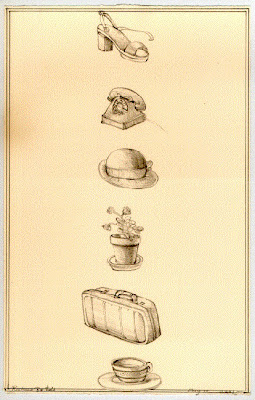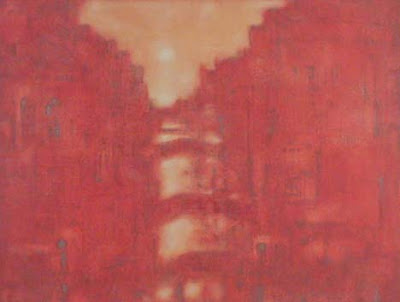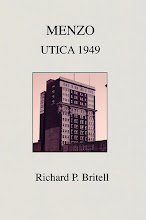
I wanted this painting to symbolize an event in the life of Alexander the Great. The story goes like this: when Alexander had finally marched his armies into the far reaches of India he met there a holy man sitting under a tree. Through one of his interpreters he started a philosophical discussion with the holy man during which he explained that he was the ruler of all of the countries from India back to Macedonia. The holy man replied, "The question is whether you can consider that you even rule the land on which you are standing." If he didn’t say that, then he said, "Please move over as you are blocking out my sunlight."
The tic-tac-toe game therefore represents the conversation between the holy man and Alexander in which the holy man wins because he says the wittiest remark. But he also wins because he gets to go first, and the first one to move in tic-tac-toe usually wins. The fact that the holy man goes first is meant to signify that Indian religious and philosophical thought is much older than Greco-Roman thinking and therefore could be said to have "gone first." But now, some observant critic of my painting might object, and say, "Just because a person goes first in tic-tac-toe does not mean necessarily that they win. And, if the game was played against Alexander the Great, the great military tactician, how could it happen then, that he would lose the game rather than tie it?"
That question had me baffled for a very long time--so perplexed that I almost had to gesso out the canvas and start over. But then I realized that the painting is a work of art, and a metaphor, and therefore does not need to conform to the strict requirements of historical writing. And as a matter of fact there is a prerequisite for the "artistic defeat" of Alexander. In Handel’s Oratorio, "Alexander's Feast," the lyrics call for Alexander to be moved to tears by the sight of his dead opponent Darius as he lies in the dust. The lyrics, singing of Darius say, "Without a friend, without a friend to close his eyes. And describing Alexander, they say, "And tears began to flow." So, if Handel can make Alexander weep over his enemy Darius, why can’t I have my Alexander let the holy man win at tic-tac-toe, as he might think, "Oh, what’s the harm, I’ve defeated them all in battle why not let them win at a little game like this."
But all of the above is pointless because I spent the day at the library trying to find that story of Alexander, and apparently it only exists in my head, as I was unable to find even the least mention of it. And even if I had found it, who’s to say that some scholar might not come along years from now and completely debunk that story, which scholars just love to do in order to make a name for themselves in academic circles. And a fine fix that would put my painting in, stripped of its very reason and explanation for its existence, hanging on a wall, just a measly tic-tac-toe game of no consequence to anyone!
With that in mind I felt that this painting should have an alternative meaning, just like a spare tire in case of a blow out. The spare meaning is that the tic-tac-toe game symbolizes five kisses, and four hugs. And I doubt if any scholar either now or in the future could ever debunk that symbol. And so if you owned this painting you could send it to a friend, and you could write a note that would begin, "When you first look at this painting I know that you will think of Alexander the Great, that time when he was in India, but it isn’t about that, not at all, this painting is about you and I that time when...”
Richard Britell 2007






































